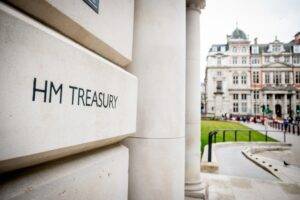
Government borrowing in May soared to £15bn, the highest level since the Covid-19 pandemic, but still below the Office for Budget Responsibility’s (OBR) forecast. This figure was £800m higher than in May last year, yet £600m less than anticipated by the OBR.
As the general election looms, the victorious party will grapple with significant challenges concerning tax, spending, and debt. Michal Stelmach, senior economist at KPMG UK, warned, “Government borrowing holds steady but the fiscal Pandora’s box awaits the next chancellor. Interest rates are set to remain higher, debt more difficult to bring down, and spending pressures continue to mount.”
Simon Wells, chief European economist at HSBC, noted some positive aspects in May’s borrowing figures but stressed that government debt remains extraordinarily high, reaching levels not seen since the 1960s. Last month’s government debt stood at 99.8% of the UK’s gross domestic product (GDP).
“Public sector debt has ramped up, first through the global financial crisis and then again through Covid, so it is at historically high levels,” Wells explained on BBC Radio 4’s Today programme. The substantial debt levels make public finances vulnerable to higher interest rates, increasing repayment costs. Wells highlighted that large debt reduces the flexibility to manage future crises.
The Bank of England has been raising interest rates to curb UK inflation, but this also results in higher interest payments on government debt. In May, interest payable on central government debt reached £8bn, one of the highest amounts on record.
Taxation is a pivotal issue in the upcoming general election, with the Conservatives, Labour, and Liberal Democrats all pledging not to increase income tax, VAT, and National Insurance rates. Reductions in National Insurance contributions have reduced government revenue, which is problematic at a time when there is reluctance to increase public spending. In May, the government received £900m less from National Insurance compared to the same month last year.
However, overall tax receipts increased by £1bn due to higher revenues from income, corporation, and value-added taxes. The government’s freeze on tax thresholds, implemented in response to Covid in 2021, has effectively increased tax rates by pulling more people into higher tax bands through “fiscal drag.”
Retail Sales Rebound in May
In separate figures, retail sales rebounded in May after a decline in April caused by poor weather. Sales volumes rose by 2.9% in May, following a 1.8% drop in April, and sales value increased by 3.2%.
Danni Hewson, head of financial analysis at AJ Bell, remarked on the British obsession with the weather: “A bit of sunshine in May lifted temperatures and spirits, translating into a bump in sales, especially for clothing and furniture retailers.”
Jacqui Baker, head of retail at auditors RSM UK, noted that consumers stocked up on clothing in anticipation of summer holidays and rumours of a UK heatwave. However, she added, “Confidence to spend on big-ticket items remains low.”
Read more:
Government Borrowing in May Reaches Post-Covid Peak





